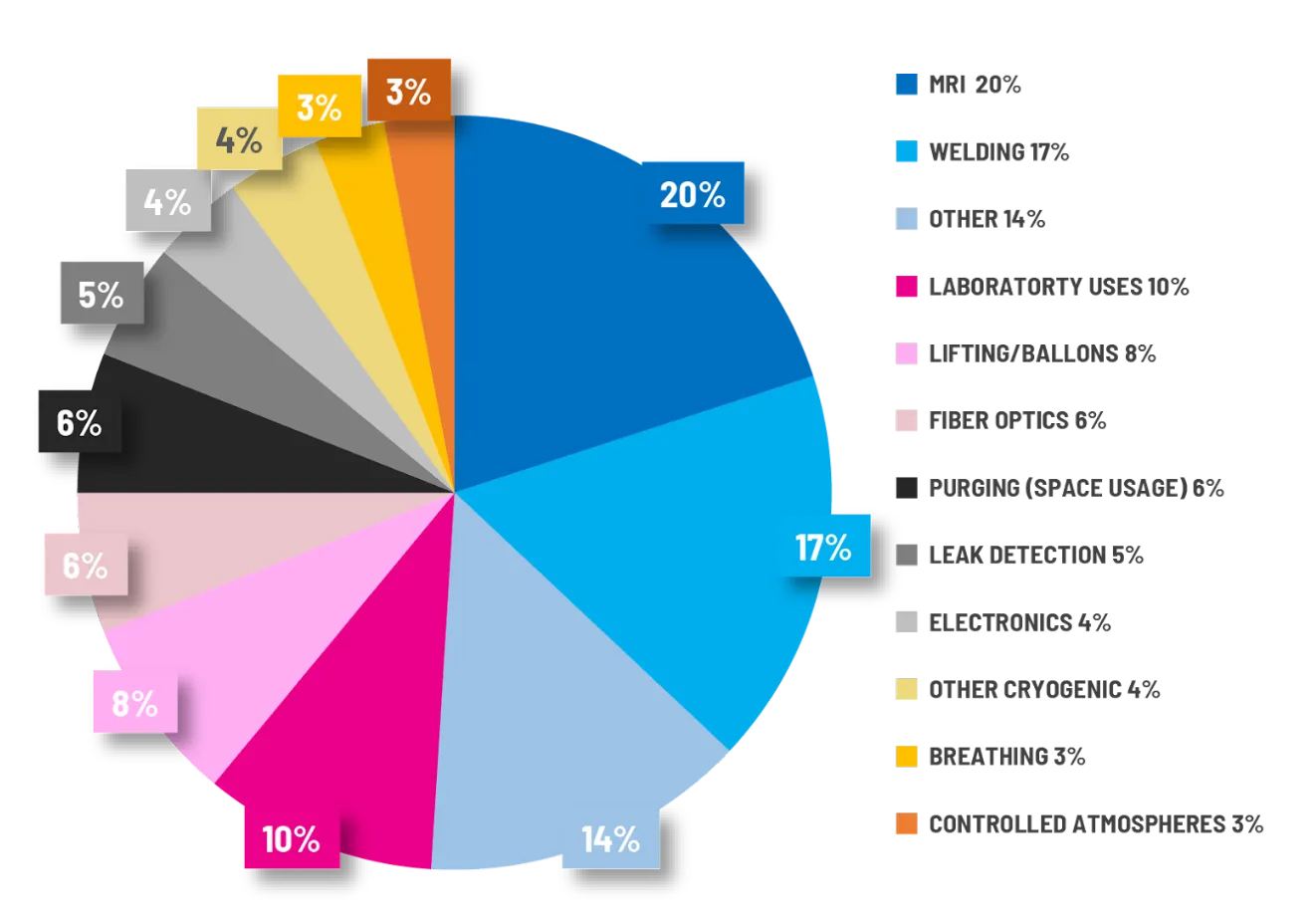Fast Facts
- Helium is the second element on the Periodic Table and the second most common element in the Universe.
- Helium is rare on Earth, our atmosphere cannot contain it.
- Helium can be found trapped underground in porous and permeable rocks.
- Helium has a number of unique characteristics that make it valuable in many applications.
- Everyday uses include MRI machines, semiconductor manufacturing, welding and as a lifting gas.
- Major technology companies like Amazon, Microsoft and Google all depend on helium to maintain their server and data centres.
- Currently the largest producers of helium are the U.S., Qatar, and Algeria.
- Canada has substantial untapped reserves of helium, and First Helium is positioned to become a reliable North American helium producer.
A Common Yet Finite Resource
Although helium is the second most common element in the universe, it is relatively uncommon on earth.
This essential element is the product of radioactive decay of thorium and uranium. Some of the helium generated migrates upwards along fractures and through permeable rocks, eventually accumulating in the subsurface along with other inert gases and/or hydrocarbons.
Because of its small size and low-density, helium is very difficult to trap. Once it reaches the surface it quickly rises and dissipates into the atmosphere. The majority of atmospheric helium is lost as it escapes into space.
The first documented encounter with trapped helium occurred in 1903 in Dexter, Kansas. A well drilling for oil and gas blew out creating a gas geyser that wouldn’t burn. Analysis of that gas indicated that it contained 72% nitrogen, 15% methane, 1% hydrogen and 1.84% helium.
Analysis on gas wells in Alberta have shown helium content from trace amounts to over 4%. First Helium’s initial discovery well contains 1.3% He.

Helium's History
During World War 1, the U.S. military built three helium plants to supply airships used in the war. In 1925 the US established the National Helium Reserve in Amarillo, Texas to maintain a strategic supply. As helium’s use in airships plummeted, other uses were starting to grow but the reserve filled.
1995 US Congress decides the National Helium Reserve was no longer essential and passed the Helium Privatisations Act in 1996. For 20 years Congress allowed the sales of helium from the reserve at a substantial discount to free market prices. Up to 50% of the world's demand was met with sales from the Reserve.
Helium exploration and development went dormant as the Reserve provided the required resources. As of today, the reserve is essentially depleted with remaining supplies dedicated to Federal users only.
Production in the U.S. is projected to decline further over the next decade and Canada is well-positioned to meet the anticipated shortfall in helium supply.
First Helium’s project at Worsley is forecasted to provide stable production and cash flow between 2023-2030, establishing the Company as a reliable North American helium producer.
Helium: Unique, Rare And Valuable
|
LOWEST BOILING & MELTING POINT -272°C
|
|
|
INERT
|
|
|
LOW-DENSITY
|
|
|
QUICK DIFFUSION
|
|
|
SMALL MOLECULAR SIZE
|
|
|
NON-TOXIC
|
|
|
SUPERFLUID
|
|
MARKET OPPORTUNITY AND ECONOMICS
USA - shortfall in supply expected
- Final auction from U.S. Strategic Reserve (Aug 2018) 4 elevates uncertainty as supply depletes
- US demand is growing, concerns that US is becoming a net importer of helium and may have to consider protectionist policies 2
Global - helium supply issues and geopolitical uncertainty
- Qatar, Algeria and Russia are major suppliers 4
- Russia Amur Plant start-up issues and war sanctions have delayed any new supply 3
Global market prices for helium have increased
- Global Helium Import Prices have grown from ~$US 310 per mcf in January 2020 to over $US 479 per mcf YTD August 2023 6
Canada - huge opportunity to grow helium industry
- 5th Largest Global Prospective Resource2, but < 2% of annual global production 7
- Government of Canada named Helium a Critical Mineral, strategic to Canada’s transition to a sustainable future
- With US supply depleting, opportunity to fulfil growing Continental market demand
GLOBAL DEMAND
6 bcf/year
$3.94 Billion (2021) - $13.26 Billion (2030) $US 5 |
1. Source: marketwatch.com | 2. Source: USGS | 3. Kornbluth Helium Consulting | 4. U.S. Geological Survey, Mineral Commodity Summaries, January 2022 | 5. Skyquest Technology Consulting Pvt. Ltd. | 6. Akap Energy Ltd. | 7. Statista Research
Demand constituents of helium

SOURCES: Edison Investment Research (February 2019)/ Kornbluth Consulting
